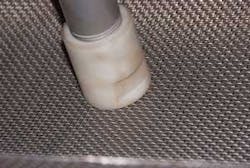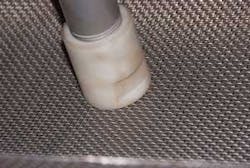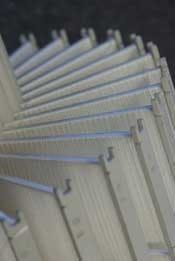Reducing Industrial Water Footprint Lightens Energy Footprint, Too
by Jim Lauria
The close connection between the water footprint of an industrial facility, which describes its overall consumption and efficiency of its water use, and its carbon footprint – much of which reflects the energy used to move, heat, cool or treat water – has never been more apparent. And as clean freshwater becomes increasingly scarce and energy becomes more expensive, reducing the water footprint has never been more critical.
Water stewardship is now viewed in terms of the lifecycle of industrial water and the systems that handle it. Delivering clean water with clean technology covers a wide range of attributes, including:
- Minimizing pumping and pressurization costs;
- Reducing footprint – in size, weight and materials;
- Eliminating water treatment chemicals;
- Using a bare minimum of backwash water.
Each of those elements links closely to environmental sustainability, which in turn contribute to economic sustainability.
Water Challenges
According to the Pacific Institute's "At the Crest of a Wave: A Proactive Approach to Corporate Water Strategy,” major companies such as Coca-Cola, Pepsi and Intel already have found themselves embroiled in fights over facilities in water-stressed areas, from Kerala, India, to New Mexico. In short, the low-cost-labor advantages of China, India or other markets could soon be eclipsed by water scarcity or quality problems. There are other challenges, too. As water supplies are stressed, pricing volatility increases and becomes more closely linked with unpredictable forces such as the weather. The cost of energy to move and manage water also is climbing to new, dizzying heights. Finally, growing regulation and increasing need for water efficiency add management cost – in time and expertise – to production. Competition is fierce in other ways as well. Industrial water users are vying for the same water being tapped by irrigators and consumers, which can lead to political and PR battles.
Pollution on the Rise
Water pollution is increasing in many areas, which is ironic because industry is faced with ever-increasing demands for cleaner water across all major categories of industrial water:
- Makeup or ingredient water, which must be extremely clean to ensure the desired product taste and characteristics, as well as to minimize the chance of waterborne contaminants or pathogens in the product.
- Process water or produced water, which must be cleaned after coming into contact with the product in order to be effectively recycled or discharged.
- Service water such as cooling, heating, cleaning, rinsing or sealing water, which also must be cleaned thoroughly before reuse or discharge.
The bottom line is that water-savvy products are becoming increasingly important in providing a competitive advantage in a range of industries. Three brief case studies illustrate how clean water can be delivered with clean technology in all of the categories of industrial water.
Cleaner Ingredient Water
A major U.S. beverage company has installed Amiad MTGs self-cleaning thread cassette filters upstream of an ultraviolet (UV) disinfection system, significantly increasing the amount of water the plant can treat per hour while dramatically reducing water waste. The thread-and-UV system replaces a much slower, inefficient system of settling tanks and 2-micron (µm) UF membranes that also required use of hydrated lime, sodium bicarbonate and ferric sulfate.
The self-cleaning thread cassette filters can be specified at 10-, 7-, 3- and 2-µm degrees of filtration, allowing the UV system to operate more effectively in the absence of particles that can shadow pathogens from the UV beams. The self-cleaning capabilities allow the filters to operate at high efficiency with minimal management and low discharge of backflush water. In addition, no chemicals are required for water treatment in the new system.
Better Process Water
Effectively filtering process water or produced water offers tremendous opportunities to improve operating efficiency and reduce costs, whether from reducing reuse or discharge costs, recovering valuable product from the process water stream, or protecting long-term viability of wells or mines.
An American pipeline company is currently excavating a salt dome in the Gulf Coast region for use as a natural gas storage facility. It's pumping fresh water into the salt dome, dissolving the salt to create a cavern, then disposing of the brine solution by deep well injection. To avoid plugging the formations that receive the brines, the company is filtering particulate out of the process water. An array of Amiad EBS automatic self-cleaning screen filters provides primary filtration. When sediment builds up on the inside of the filter, a self-cleaning mechanism of small nozzles is engaged to allow the filter cake to exit in a concentrated stream. Water loss to backflush is minimal – typically less than 1% of the flow – and the filter continues operating during the self-cleaning cycle.
High-Performance Service Water
The cleanliness of service water has many impacts on the water footprint, carbon footprint, and overall environmental impact of many industrial facilities. Clean water can substantially reduce silting or wear on seals, bearings, pumps and other infrastructure, in turn reducing maintenance labor costs as well as the need for new parts. If the water is clean enough to recycle or re-purpose, it also may be well on its way to optimum temperature, dramatically reducing the energy needed for heating or cooling.
At a coal-fired utility plant in the U.S. Southwest, managers had sidelined a sand media pre-filter because of persistent problems with media carryover plugging the 1-µm cartridges between the media filter and its reverse osmosis (RO) unit. Maintenance staff had to change the cartridges every two weeks – a costly effort. Replacing the media filter with a self-cleaning screen filter dropped total suspended solids (TSS) from 10.46 ppm to 0.0001 ppm, protecting the cartridges and RO membranes downstream, and dramatically reducing the amount of backflush water consumed.
Conclusion
As oil approaches $150 per barrel, the cost of all materials rise, from chemicals to concrete. Creating any industrial system – including water treatment systems – with less concrete, less steel and reduced reliance on chemical inputs becomes a wiser choice than ever. In today's industrial climate – and tomorrow's – the links that bind water efficiency, energy efficiency, and industrial sustainability will grow ever tighter and more important. As water efficiency becomes increasingly central to the sustainability of a plant, from its initial public acceptance to its profitable operation, clean water and clean technology will be at the heart of its success.
About the Author: With over 25 years of water industry experience, Jim Lauria is vice president of sales and marketing for Amiad Filtration Systems, a manufacturer of clean technology water filtration systems for agricultural, industrial and municipal applications. Before joining Amiad, Lauria owned Team Chemistry LLC, a consultancy on developing new business opportunities for water treatment technologies, and was president of an $80-million filter media company. As such, he provided peer review for the World Health Organization's publication on drinking water treatment and, in partnership with a university, led a team that pioneered arsenic reduction in drinking water. Contact: 800-969-4055 or www.amiadusa.com



